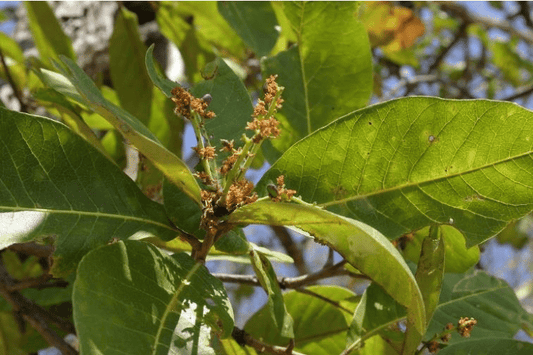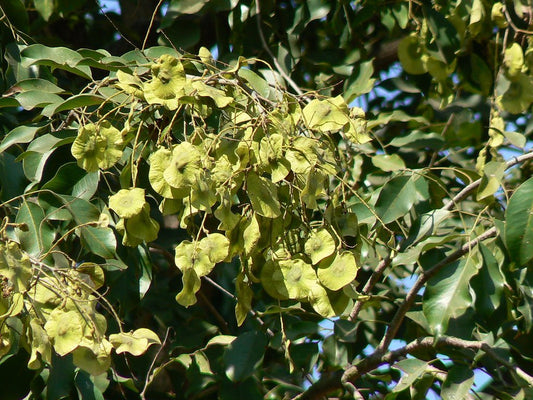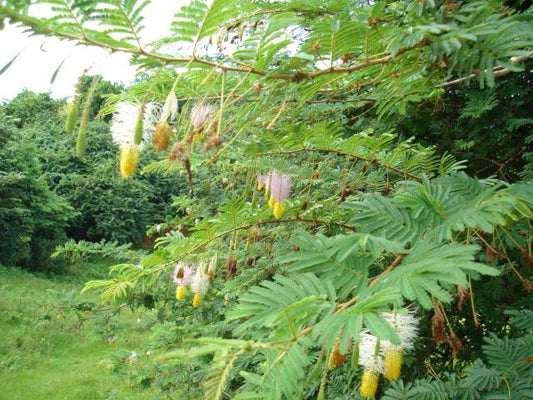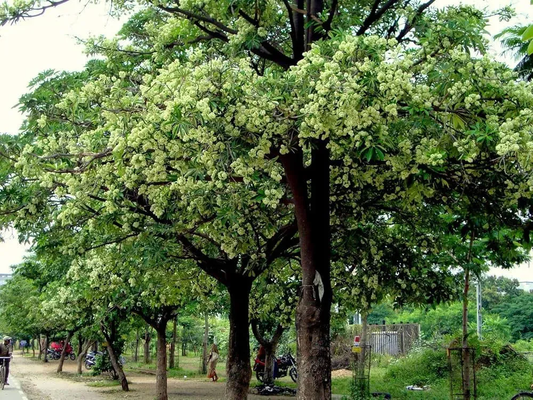

The Putranjiva Tree, scientifically known as Putranjiva roxburghii, is a fascinating species revered for its medicinal properties, cultural significance, and ecological contributions. Commonly found in India and Southeast Asia, this evergreen tree ha Read more
Putranjiva Tree: Unlocking the Mystical Secrets of Nature’s Fertility
The Putranjiva Tree, scientifically known as Putranjiva roxburghii, is a fascinating species revered for its medicinal properties, cultural significance, and ecological contributions.
Commonly found in India and Southeast Asia, this evergreen tree has been celebrated for centuries as a symbol of fertility and protection.
From ancient Ayurvedic texts to modern environmental initiatives, the Putranjiva Tree continues to captivate with its multifaceted benefits. Let’s explore its rich history, healing wonders, and ecological importance.
What is the Putranjiva Tree?
The Putranjiva Tree belongs to the family Putranjivaceae and is native to tropical and subtropical regions. It is a medium-sized tree that grows up to 12 meters tall, featuring dense foliage, oval-shaped leaves, and small, inconspicuous flowers.
Its drupaceous fruits contain seeds that are traditionally associated with fertility and protection, making the tree a cornerstone of cultural and medicinal practices.
Historical and Cultural Significance
The Putranjiva Tree holds deep cultural and spiritual value in Indian traditions. Its name, derived from Sanskrit, means "life-giving to sons," reflecting its symbolic association with fertility and prosperity.
In Hindu rituals, its seeds are often used in sacred ceremonies to bless couples hoping for children. Ancient texts also highlight its role in warding off negative energies and ensuring family well-being.
Fun Fact: The seeds of the Putranjiva Tree were traditionally strung into necklaces for pregnant women, believed to protect both mother and child from harm.
Medicinal Properties of the Putranjiva Tree
The Putranjiva Tree is not just a cultural symbol; it’s also a medicinal powerhouse. Its seeds, bark, and leaves are rich in bioactive compounds like glucosinolates and tannins, which contribute to its healing properties.
- Anti-inflammatory: Its extracts are used to reduce swelling and treat joint pain, making it effective for arthritis and other inflammatory conditions.
- Fever Relief: The bark and leaves are used in traditional remedies to alleviate fevers and promote faster recovery.
- Respiratory Health: Its seeds are used to treat colds, coughs, and bronchitis, showcasing its versatility in respiratory care.
- Antioxidant Properties: The tree’s bioactive compounds help combat oxidative stress, boosting immunity and overall health.
Scientific Backing
Research published in the Journal of Traditional Medicine supports the Putranjiva Tree’s antimicrobial, anti-inflammatory, and antioxidant properties.
Studies have validated its role in treating respiratory and inflammatory conditions, providing modern credibility to its ancient uses.
Environmental Impact
Beyond its medicinal and cultural significance, the Putranjiva Tree plays an essential role in maintaining ecological balance. Its dense canopy and extensive root system support biodiversity, prevent soil erosion, and contribute to carbon sequestration.
- Biodiversity Support: The tree provides shelter and food for birds, insects, and small animals, fostering vibrant ecosystems.
- Soil Stabilization: Its roots help prevent soil erosion, particularly in flood-prone areas, while improving soil fertility.
- Carbon Sequestration: As an evergreen tree, it absorbs carbon dioxide year-round, aiding in the fight against climate change.
Fun Fact: The Putranjiva Tree is often planted near homes and temples as a natural air purifier and symbol of prosperity.
Putranjiva Tree in Traditional Medicine
In Ayurveda, the Putranjiva Tree has been used for centuries to treat a variety of ailments. Its seeds are ground into powders or oils, while its leaves and bark are boiled to create medicinal decoctions.
These traditional preparations are used to improve fertility, boost immunity, and combat respiratory issues, making the tree a cornerstone of natural healing.
Planting and Caring for the Putranjiva Tree
- Soil: Thrives in well-drained sandy or loamy soils but can adapt to a variety of soil conditions.
- Sunlight: Requires full to partial sunlight for healthy growth and dense foliage.
- Watering: Needs moderate watering; ensure the soil is not waterlogged to prevent root rot.
- Pruning: Regular pruning helps maintain its shape and encourages healthier growth.
Modern Applications
Beyond its traditional uses, the Putranjiva Tree has found applications in modern industries. Its seeds are being studied for pharmaceutical and nutraceutical products, while its wood is used for crafting tools and furniture.
Its environmental benefits make it a popular choice for reforestation projects and urban landscaping, blending functionality with sustainability.
Cultural Symbolism
The Putranjiva Tree is deeply intertwined with cultural and spiritual practices, particularly in Indian traditions. It symbolizes fertility, prosperity, and protection, often planted near homes and temples as a blessing for families.
Its seeds, used in rituals and ornaments, continue to be a part of sacred ceremonies, reflecting its enduring cultural importance.
Conservation and Sustainability
While the Putranjiva Tree is not currently endangered, urbanization and habitat loss pose threats to its natural population. Promoting its planting in urban and rural areas can help preserve its ecological and cultural value.
Incorporating it into sustainable landscaping and reforestation projects ensures its benefits are enjoyed for generations to come.
Conclusion
The Putranjiva Tree is a symbol of nature’s generosity and resilience, blending cultural significance, medicinal benefits, and ecological contributions.
From its ancient role as a fertility symbol to its modern applications in medicine and sustainability, it stands as a testament to the timeless wisdom of nature.
By celebrating and conserving this remarkable tree, we ensure its legacy continues to enrich our lives and the environment for years to come.
You may also like
Corporate Plantations
Putranjiva Tree Benefits
The Putranjiva Tree is a natural multitasker, offering fertility symbolism, medicinal remedies, and ecological contributions, making it a timeless marvel for health, culture, and sustainability.
Medicinal Properties of Putranjiva Tree
Packed with bioactive compounds, this tree’s seeds, bark, and leaves treat inflammation, respiratory issues, and fever, proving that nature’s pharmacy is always open.
Putranjiva Tree in Traditional Medicine
Revered in Ayurveda, its extracts have been used for centuries to boost immunity, improve fertility, and treat various ailments, showcasing the wisdom of ancient healing practices.
Cultural Significance of Putranjiva Tree
Known as a symbol of fertility and prosperity, this tree plays a vital role in rituals and traditions, often planted as a blessing for families and future generations.
Environmental Role of Putranjiva Tree
From stabilizing soil to absorbing carbon dioxide and supporting biodiversity, the Putranjiva Tree proves it’s not just beautiful but also environmentally indispensable.
Putranjiva Tree in Modern Applications
Beyond its ancient uses, this tree’s medicinal extracts are studied for pharmaceuticals, while its wood finds applications in crafting tools and furniture.
Putranjiva Tree Care Tips
Thriving in sunny spots with well-drained soil, this hardy tree requires minimal watering and regular pruning, making it an ideal choice for urban and rural landscapes.
Conservation of Putranjiva Tree
Habitat loss and urbanization threaten this marvel, making its conservation crucial for preserving its ecological, medicinal, and cultural contributions.
FAQ
What is the Putranjiva Tree?
The Putranjiva Tree, scientifically known as Putranjiva roxburghii, is an evergreen tree celebrated for its fertility symbolism, medicinal benefits, and environmental contributions.
Why is the Putranjiva Tree called a fertility symbol?
Its seeds are used in rituals to bless couples with children, earning it a sacred reputation as a symbol of fertility and prosperity.
What are the medicinal uses of the Putranjiva Tree?
Its seeds, bark, and leaves treat inflammation, fevers, respiratory conditions, and digestive issues, making it a natural remedy powerhouse.
How does the Putranjiva Tree benefit the environment?
The tree supports biodiversity, prevents soil erosion, and sequesters carbon, proving it’s as eco-friendly as it is culturally significant.
Can the Putranjiva Tree thrive in urban areas?
Yes, this adaptable tree thrives in sunny spots with well-drained soil, making it perfect for urban landscaping and green spaces.
Why is the Putranjiva Tree culturally significant?
Associated with fertility and protection, it features prominently in rituals and traditions, symbolizing prosperity and family well-being.
What are the modern applications of the Putranjiva Tree?
Its medicinal extracts are studied for pharmaceuticals, while its wood is used in crafting tools and furniture, blending tradition with innovation.
Why should we conserve the Putranjiva Tree?
Habitat loss threatens its survival, and conservation ensures its ecological, medicinal, and cultural benefits are preserved for future generations.
Connect with us
-
👥 Corporates
If you are looking for:
- 🌲 Tree Plantation Events
- 📊 CSR Projects
📧 corporate@growbilliontrees.com
📞 +91 9699723523
💬 +91 9370599291 WhatsApp (Only)
🕒 Mon - Sat | 10am - 7pm IST
-
🧩 Tree Plantation NGOs
If you are looking for:
- 💰 Financial Assistance
- 🤝 Operational Support
📧 support@growbilliontrees.com
📞 +91 9699723523
💬 +91 9370599291 WhatsApp (Only)
🕒 Mon - Sat | 10am - 7pm IST
-
🌼 Individuals
If you are looking for:
- 👥 Group Tree Plantation Drive
- 🌳 Bulk Tree Plantation
📞 +91 9699723523
💬 +91 9370599291 WhatsApp (Only)
🕒 Mon - Sat | 10am - 7pm IST








